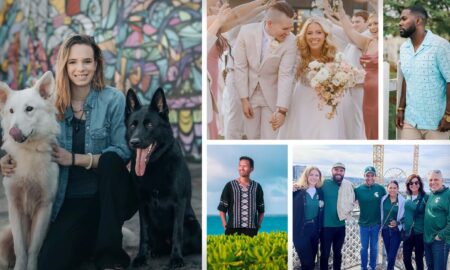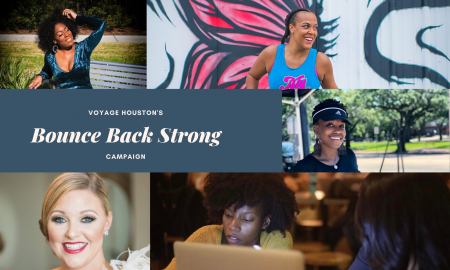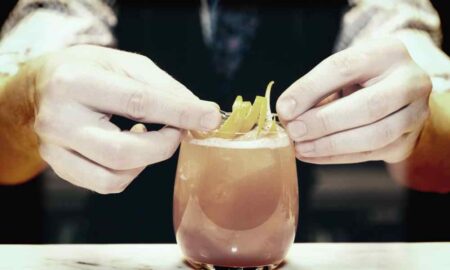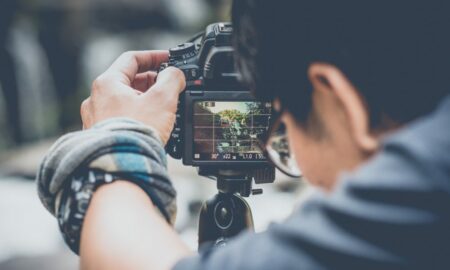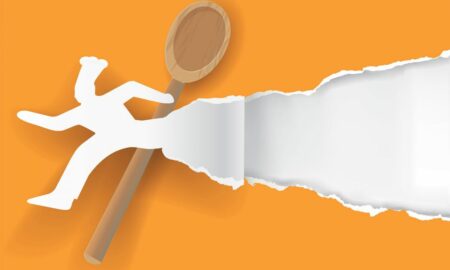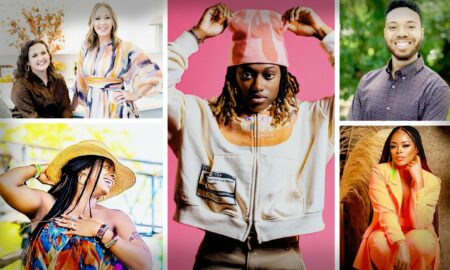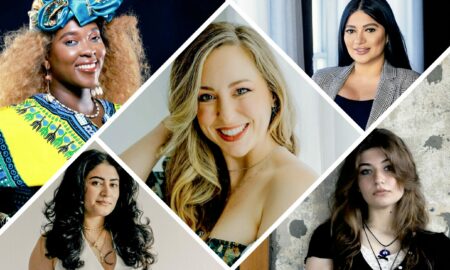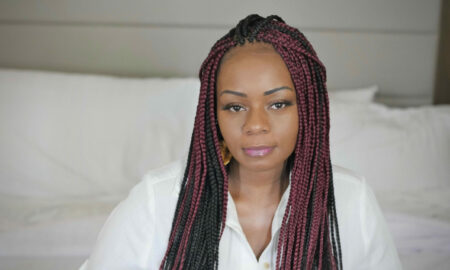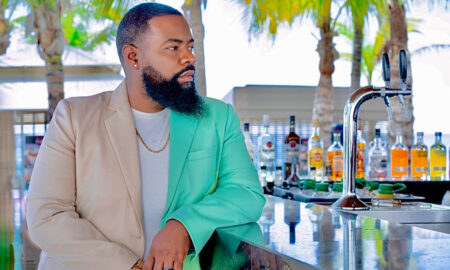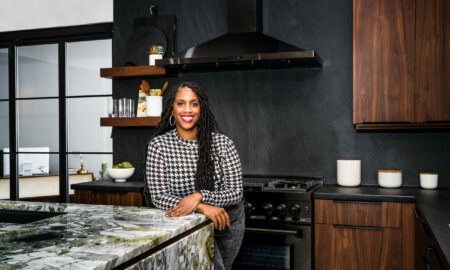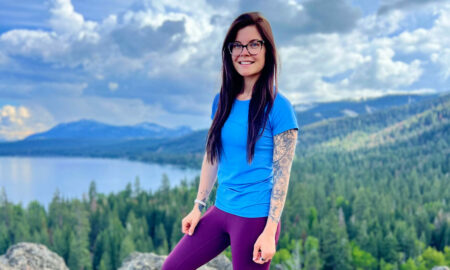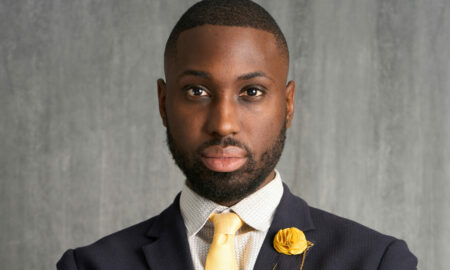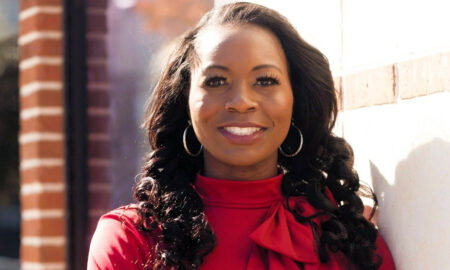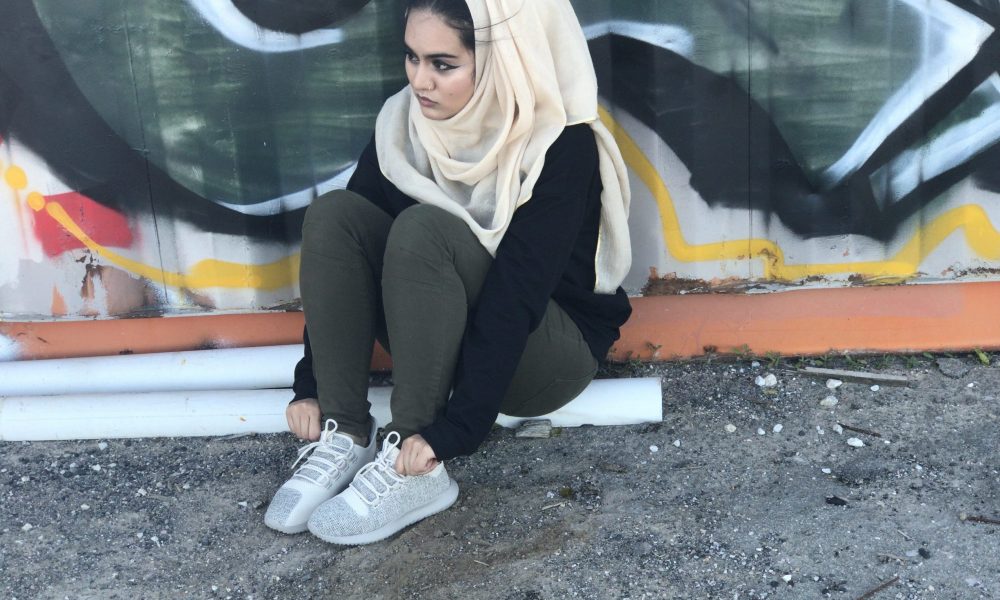

Today we’d like to introduce you to Amina The Artist.
Every artist has a unique story. Can you briefly walk us through yours?
I grew up the youngest of 4 to a family that I didn’t share a lot in common with. I’m the only child that was born in the U.S., and there’s a huge age gap between my siblings and I. My parents were afflicted with physical illnesses and old age that didn’t always make it easy to be a parent to a child so much younger than their first 3 and I watched my mother battle mental illness growing up. So I was always a kid looking for a safe haven somewhere. I never realized it would be art. I always liked to draw, but I didn’t realize I was decent at it till about college when someone actually said to me, “Hey, your little doodles are pretty good.” I really lacked the confidence back then so often times; I would deflect and take compliments with a grain of salt.
When I started seeking my identity as a Muslim at around age 22, my love for the Qur’an started to develop. And shortly after – my love for Arabic calligraphy. The more I dove into reading and understanding the Qur’an, the more it made me care about things. Like humanity. I started to take more interest in politics and tried to find clever ways to represent disenfranchised people in my art. Whenever there were protests or rallies taking place anywhere in the city, I made sure I was there with my drawings on my protest signs. At the same time, I mustered the courage to share basic calligraphy compositions on Facebook in 2015. They were pretty amateur and looking back on them now; I’m cringing at myself for even sharing them. But I always wanted to merge the two passions – politics and calligraphy. The signature piece to do that was The Dome of the Rock. It’s an Arabic composition in the shape of the historical site in Jerusalem. It’s a piece specifically to shed light on occupied Palestine. I called this kind of work artivism.
As more time passed, and as I grew as an artist, my pieces became more and more personal touching on identity politics, mental health, and pieces of my life that shaped me. My most recent piece is called Healer of Hearts. It takes a verse from the Qur’an in the shape of a human heart, and the story behind it is among one of the most personal ones yet across my four signature calligraphy pieces. This was my way of storytelling.
I began to explore several disciplines and adding more and more to my skillset over time. When people ask me what my medium is, I tell them I’m a multi-niche artist. And I really own that because I can’t be put in a box. I’m never not experimenting with new concepts. It’s an insatiable craving. It’s within that quest where I find my safe haven. My art is my safety net. I truly feel like without it. I would self destruct. It came into my life on the dark days I wanted to end it. To be honest, my art couldn’t have called me at a better time.
Please tell us about your art.
I’m best known for my Arabic calligraphy that takes excerpts from the Qur’an and transforms the compositions into identifiable shapes and structures to build resonance. Outside of that, I do hand lettering and typography and recently, surrealist art. I incorporate a lot of my lettering and surrealism to my resistance pieces that represent disenfranchised communities around the world as well as my pieces for mental health. My workaround mental health focuses a lot on self-harm and trauma as these are still things I struggle with till this day.
The thing I want my audience to know is that I’m telling a story with every single piece. I’m trying to say all the things I can’t say out loud, and if my work makes you stop and think, then it just served its purpose.
Given everything that is going on in the world today, do you think the role of artists has changed? How do local, national, or international events and issues affect your art?
We, as artists, have the opportunity to use our media to tell stories. Our stories and theirs. We’re no longer living in times where we can afford to be apolitical or complicit in pressing matters that set the tone for the livelihood of others -, especially POC. Everything happening around the world isn’t just affecting my art; it’s quite literally what’s driving me to create content, to begin with. These are stories I’m telling through my art. I want people to look. And I want people to listen.
How or where can people see your work? How can people support your work?
I have collections of my works on my Instagram page (@AminaTheArtist). My website will be ready this summer. I do custom pieces that can be ordered via email. And as far as my workaround disenfranchised communities, I want others to support me, yes. But even more than that, I want others to support the causes, the grassroots/local and global efforts for relief aid to these communities and to bring about awareness. For my work around mental health, I want to start conversations. I want my work to be the bridge between my audience and taking down the stigma around mental health. This is the kind of work I live for.
Contact Info:
- Email: orders@aminatheartist.com
- Instagram: www.instagram.com/AminaTheArtist
- Facebook: www.facebook.com/AminaTheArtist
- Twitter: www.twitter.com/AminaTheArtist






 Image Credit:
Image Credit:
Ruma
Getting in touch: VoyageHouston is built on recommendations from the community; it’s how we uncover hidden gems, so if you know someone who deserves recognition, please let us know here.

